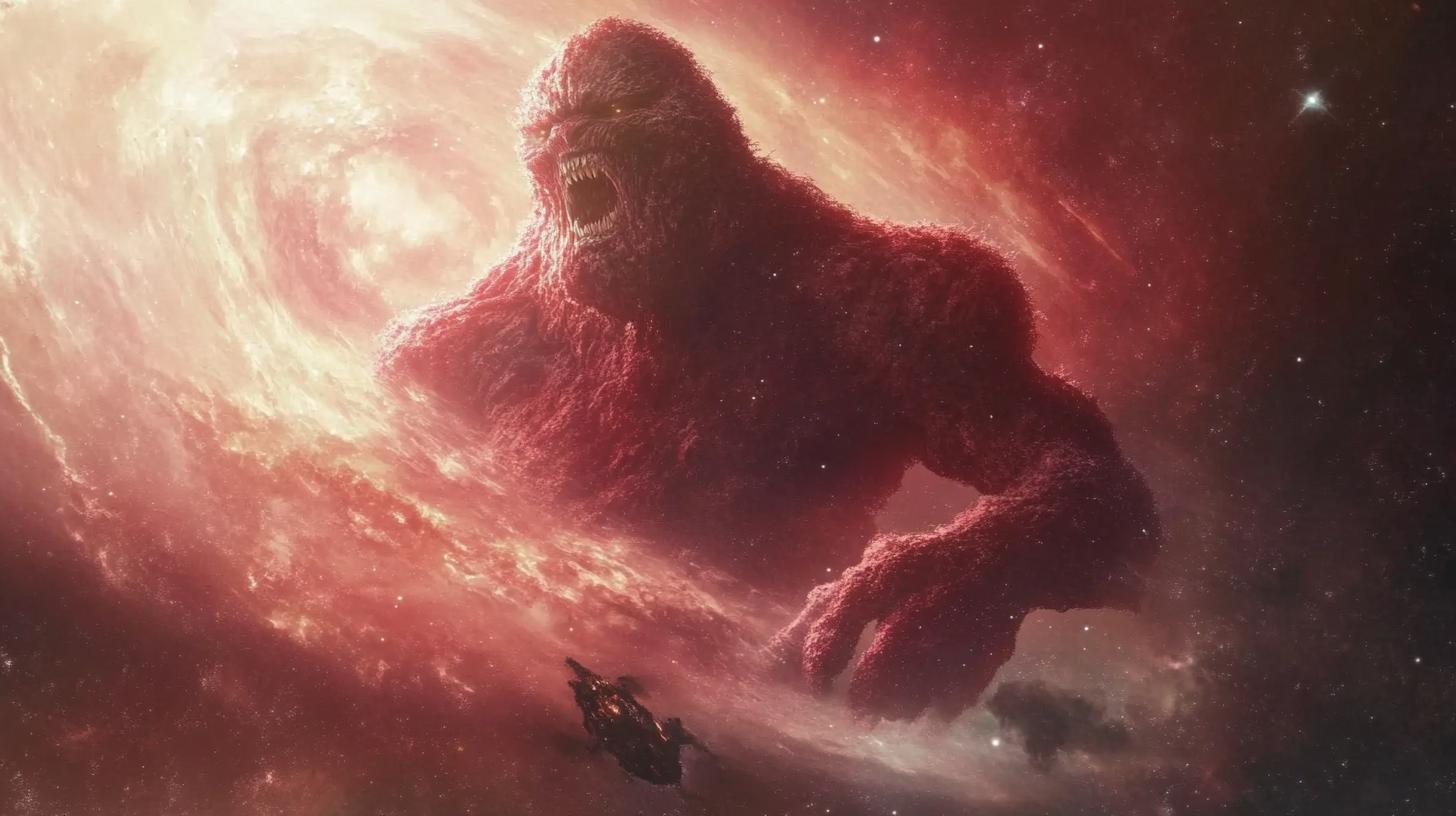Astronomers have unveiled a groundbreaking discovery using the James Webb Space Telescope (JWST), identifying three colossal galaxies, dubbed the “red monsters,” in the early universe. These titanic entities, boasting a mass equivalent to 100 billion times that of the Sun, challenge existing theories of galaxy formation with their rapid and unexpected development.
Published in Nature, the findings reveal that these galaxies, dating back over 12.8 billion years, managed to grow to sizes comparable to the Milky Way in less than a billion years after the Big Bang. This staggering rate of star formation has left scientists puzzled and questioning traditional models of cosmic evolution.
Researchers are astounded by the emergence of these massive galaxies so early in the universe’s history. Astrophysicists typically believe that galaxies form within dark matter halos, gradually converting gas into stars—usually only around 20% of available gas. However, these red monsters defy this norm, achieving a conversion rate of up to 80%.
With this revelation, scientists are eager to gather more insights into these early cosmic conditions. The special red hue of the galaxies was captured using the JWST’s NIRCam, an advanced instrument capable of penetrating dust-obscured regions in the primordial universe, which other telescopes cannot access.
Continuing research with the JWST and the ALMA telescope in Chile seeks to delve deeper into these giant galaxies. This discovery paves the way for a new era of exploration, as astrophysicists work to realign their understanding of galactic evolution and the extraordinary stellar efficiency of the “red monsters.”
What the “Red Monsters” Are Not Telling Us: Unpacking Astronomical Mysteries
In the wake of astronomical revelations, the universe continues to unveil secrets that challenge our understanding. As the James Webb Space Telescope (JWST) identifies the colossal “red monsters,” the narrative around cosmic evolution takes unexpected twists. Not only do these massive galaxies call for a reevaluation of astronomical theories, but they also spark a discourse on the implications for technology and human progress.
The Intersection of Astronomy and Human Progress
The discovery of these “red monsters” isn’t just a win for scientific curiosity—it’s a leap forward for technology. The JWST’s sophisticated NIRCam technology marks a significant advancement in exploring the universe. The ability to penetrate dust-obscured regions opens doors to discovering previously hidden cosmic phenomena, potentially leading to innovations in imaging technology. Could this breakthrough lead to enhanced satellite imagery or new techniques in medical imaging on Earth?
Controversies and the Cosmic Conundrum
This mind-boggling discovery raises several paradoxes. If galaxies indeed formed much faster and more efficiently than previously believed, what does this suggest about our existing models of the universe? Are we potentially underestimating the evolution of other cosmic structures? The 80% gas-to-star conversion rate these galaxies exhibit stirs debate, questioning foundational astrophysical principles.
Furthermore, this rapid galaxy formation in the universe’s infancy could imply the existence of unknown cosmic processes or components. Could there be an unidentified factor influencing early galaxy growth? If so, what might this secret ingredient teach us about the universe’s origins?
Pros and Cons: Weighing the Implications
In terms of advantages, understanding these early universe conditions fosters a deeper grasp of cosmic history, potentially leading to novel technologies and methodologies across scientific fields. The data might enable simulations that revolutionize our perception of galactic dynamics, influencing everything from energy studies to climate modeling.
However, the challenges cannot be ignored. The foundational shake-up in theoretical physics might demand a reevaluation of a century’s worth of cosmic studies. Researchers would need vast resources and investment to pursue new models, which could divert attention from other pressing scientific inquiries.
The Questions Continue: Unraveling the Mysteries
What do these revelations mean for our comprehension of dark matter and its role in the universe? As the JWST continues its mission alongside ALMA in Chile, what further secrets might they uncover? The universe teems with enigmas, and it’s clear that our cosmic journey is just beginning.
For those eager to journey further into the mysteries of space, check out more profound insights at NASA’s official site, or stay up to date with developments in astrophysics at ESA’s portal.
In conclusion, while the “red monsters” offer more questions than answers, they undeniably propel both our scientific understanding and technological frontiers into uncharted territories. Whether this will herald an astrophysical revolution or quietly refine existing theories, one thing is certain: the universe remains a realm of boundless wonder.







